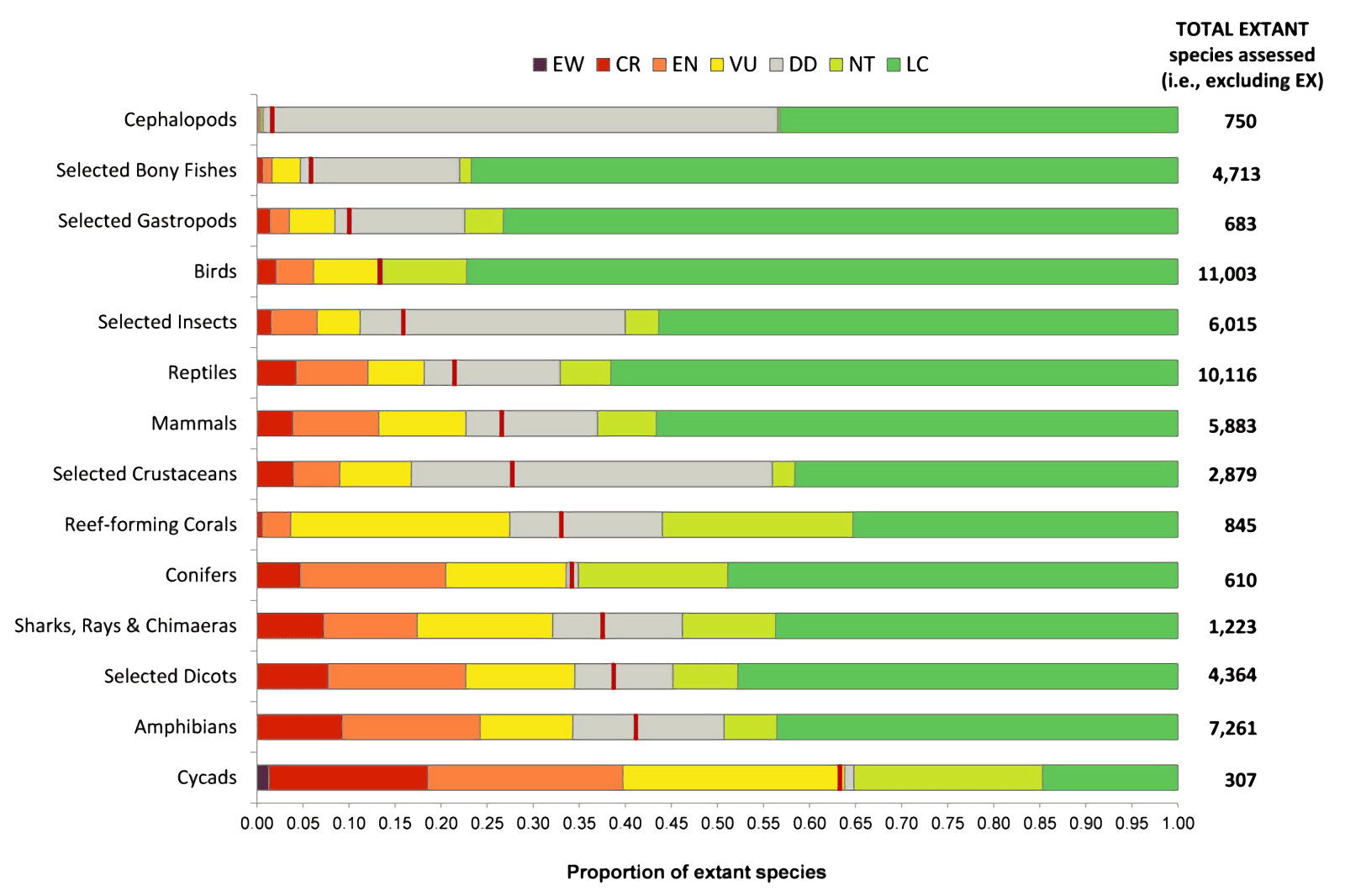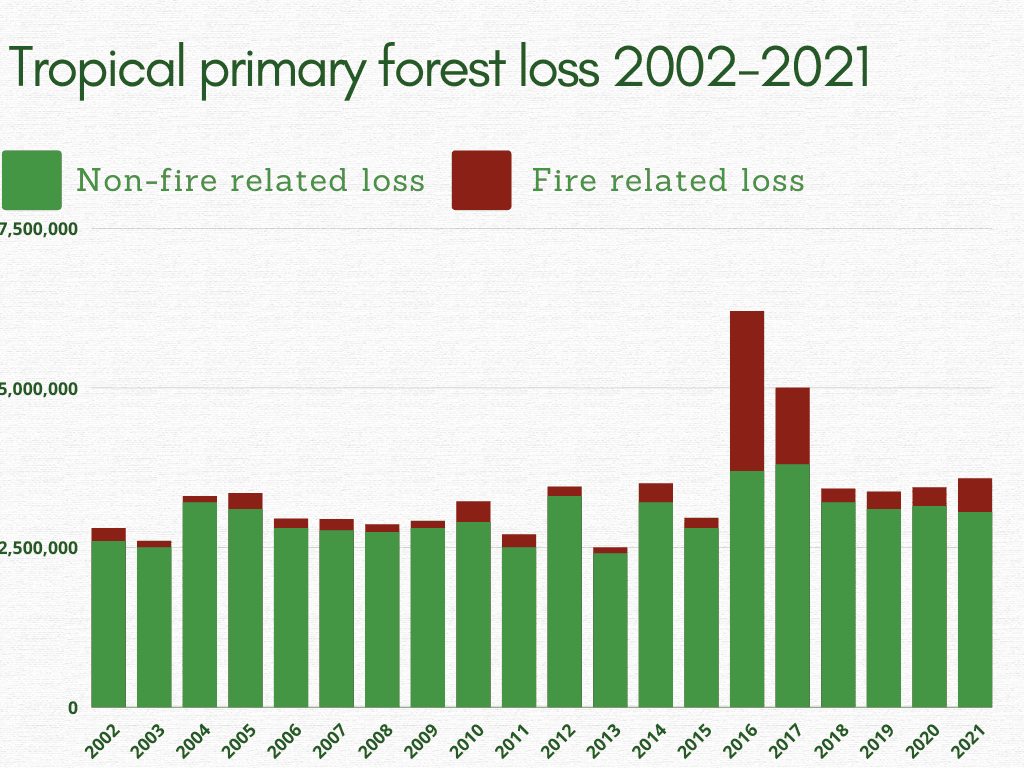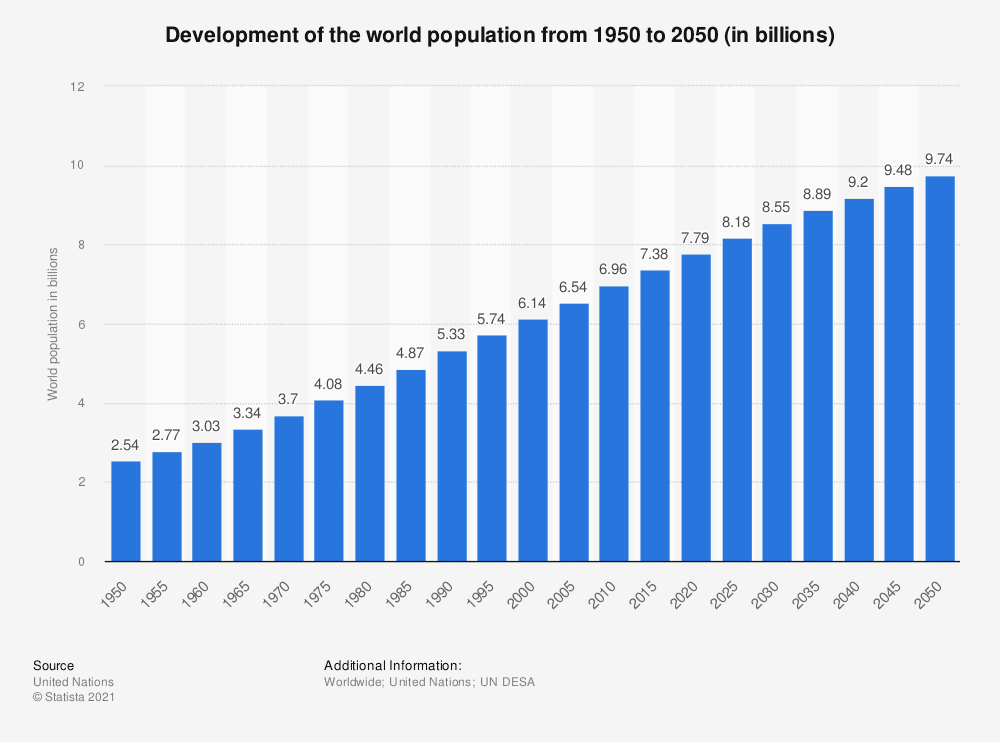World hunger, lack of resources, economic crisis, deforestation, exploitation of seas and soils, and air and water pollution are all pushing our world into ecological catastrophe. Vital resources, such as freshwater, are decreasing while the number of people is growing. Glaciers continue to melt, changing the world's oceans and climate. New diseases are emerging, and antibiotics might not work for bacteria. In this article, we will analyze what may happen if people don’t change and show the possible solutions to the global crisis and environmental catastrophe.
Introduction—We are Here
It’s time to save the Earth from ourselves - humans. Each of us has heard about environmental issues. Deforestation, pollution of the environment with waste, and garbage that does not decompose for decades - are prerequisites for ecological catastrophe. All of us can prevent it. We urge you to start with yourself - otherwise, you will not be able to save the planet.
What May Happen if we Don't Change
- Global biodiversity is rapidly disappearing
The Red Book of the International Union for Conservation of Nature (IUCN) - a list of endangered species - is a critical indicator of our impact on nature. Nearly 100,000 species were assessed under this project. More than a quarter of them are threatened with extinction, from lemurs in Madagascar to amphibians such as frogs and salamanders and plants such as conifers and orchids. This estimate is not final, and we do not know how many animals, fungi, and plants there are on our planet, but most experts say 11 million species or less.
Current extinction rates are about 1,000 times higher than before the appearance of humans and are expected to be about 10,000 times higher in the future. According to a study published by IPBES, human actions could lead to the extinction of half of African birds and mammals by the end of 2100.

The proportion of extant (i.e., excluding Extinct) species in The IUCN Red List of Threatened Species.
- The threats to wildlife, habitat loss, climate change, and pollution
Although climate change is a growing threat, the main drivers of biodiversity loss remain habitat loss through land use for food, fuel, and timber and the over-exploitation of plants and animals by humans through deforestation, hunting, and fishing.
Mammals such as pangolins, for example, are on the verge of extinction due to illegal hunting for their shells and meat. Irrational deforestation contributes to rhinolite monkeys' extinction in Myanmar, and the expansion of agriculture is destroying animals such as cheetahs.
Land degradation includes forest disappearance, which accelerates in tropical forests with some of Earth's highest levels of biodiversity.

-
Natural disasters
The main reasons for the decline in agricultural production are droughts, floods, storms, pests and diseases, and natural fires. More than 34 percent of crop and livestock losses in the least developed and middle-income countries are caused by droughts, which cost the industry a total of $37 billion. Almost all the damage from droughts falls on agriculture. Even the ocean can be a threat to humanity. Its depths have been explored by only 5%, and we don’t know what it hides in its waters and what dangers it can pose to people. -
Overpopulation
There are already more than 7.8 billion people today, and that number is growing every day. Such a large number of people inevitably leads to the depletion of resources. The current oil resources will be enough for approximately two generations at this rate. We are running out of coal and gas, which will throw our civilization into the Stone Age. But if you can still exist without oil, coal, and gas, you can’t live without fresh water. Despite the melting of glaciers, there is less and less water on Earth.
It is directly related to the increase in population on Earth. The swamps need to be drained to break up the fields and accommodate everyone. They need to be fed and provided with light and heat, leading to deforestation. The fewer forests, the fewer rivers. And the volumes of plants and factories will increase - even more emissions into the atmosphere.

- Increase of diseases and viruses
Population growth will inevitably lead to an increase in diseases and their mutation. Scientists are already reporting bacterial resistance to antibiotics. It means we can go back to pre-penicillin times when pneumonia was fatal in more than 90% of cases. And if now people can be killed by oncology or HIV, then in 10-20 years, another Ebola may cause an immunity or cure.
Is it Possible to End World Hunger?
Researchers have estimated that countries need more than double food security spending to overcome world hunger by 2030. In total, they will need about $330 billion.
Suppose rich countries redouble their aid commitments and help emerging countries prioritize, appropriately target and expand cost-effective measures for agricultural research and development, technology, innovation, education, social protection, and trade facilitation. It may be possible to end hunger by 2030.
Efforts to combat hunger have traditionally focused on producing more food. Still, this method is costly to the environment. Agriculture is depleting 70% of the world's freshwater reserves and 40% of the land. It has contributed to the almost complete extinction of about a million species. Food production generates 30% of the world's greenhouse gas (GHG) emissions and is the main cause of deforestation in the Amazon.
Thus, politicians seeking to eradicate hunger today face a dilemma: not to allow billions of people to starve and save the planet. Researchers suggest working to reduce crop losses: focusing not only on storage issues but also on growing more nutritious fruits and vegetables.
Let’s consider different ideas that scientists believe can help save the world from hunger:
- Increase productivity Due to global warming, agriculture suffers greatly from droughts and floods, and the planet's land resources are limited. Therefore, it is crucial to find new ways to increase crop resources. For example, American scientists use special chemicals to protect crops from heat. One of the substances, "Kinabactin," mimics the action of a natural hormone contained in plants and allows them to withstand extreme conditions, including heat better.
- Synthetic biology is a science that deals with the construction of new DNA, i.e., the creation of new species. It is still underdeveloped, but even the discoveries that have already been made in this area can change the world. Synthetic biology and three-dimensional printing combine to create organisms with new functions that can be an essential source of food or energy for humanity in the future.
- Revival of forgotten crops People need to diversify crop production because the world now depends on only a few crops. In the conditions of extensive agriculture, for example, we can use the millet in the situations of extensive agriculture. It is one of the most drought-resistant crops.
- Boost social protection programs Many countries still lack the social welfare systems that can provide effective social support for vulnerable communities in developing countries.
Greener Future: Eco-activism and Education
Ecology is about living in the world without destroying it. The future of a clean environment and the entire planet's ecology depends on each of us. Small steps give more chances to create a comfortable, clean, healthy environment. Such a movement as eco-activism is becoming more and more popular. It is one way to involve people in social or political organizations to prevent environmental damage.
Due to climate changes, biodiversity loss, and other crises, leaders worldwide point to education as one of the solutions. The Sustainable Development Goals aim to ensure that by 2030, “all learners acquire knowledge and skills needed to promote sustainable development, including among others through education for sustainable development and sustainable lifestyles.”
Experts call for radical changes in energy production and consumption, industries, construction, and transport. But without waiting for initiatives at the state level, we can try to help the planet, be more eco-friendly and educate others by our example.
What can we do?
-
Sort garbage and give it to recycling
Instead of ending up in landfills or the ocean, glass, plastic, and paper can be recycled into other products. To do this, we must dispose of the waste in special landfills for recycling. You can recycle paper, batteries, plastic, glass, and more. For example, the paper makes up more than 25 percent of the municipal solid waste generated annually, more than any other material, according to the U.S. Environmental Protection Agency's website. Recycled paper is used to make new paper products that help preserve trees and other natural resources. You can reduce the amount of used paper by printing less, using both sides of the sheet, using fewer napkins, and disposing of other paper products. -
To refuse plastic bags in our daily use
About 4 trillion plastic bags are still consumed worldwide each year. So far, about 60 countries worldwide have begun to refuse plastic at the legislative level. Everyone can start the fight against plastic bags by simply reducing their consumption. For example, you can use reusable bags in the store. This will not only reduce the amount of plastic you consume but also help save money. -
Choose the most environmentally friendly transport
A typical car emits about 404 grams of carbon dioxide per mile (1.6 km). During the year, the average car emits 4.6 tons of carbon dioxide. Instead of using a personal vehicle, you can go to work by public transport or choose an even better option - go by bike or on foot. It is not only environmentally friendly but also accessible. It will save on fuel and car maintenance. -
Discard disposable bottles and utensils
Only 9 percent of all plastic waste ever produced has been recycled. Plastic bottles, disposable utensils - some people use these disposable products daily. And everyone can easily limit their use. Instead of buying water in plastic bottles, you can buy a reusable bottle and carry water with you. Instead of disposable utensils, you can use ordinary ones. -
Be energy efficient in everyday life
Many simple methods to save energy at home can also help you save money—for example, optimal lighting. Use natural light during the day. When you turn on the lights in the evening, do it only where necessary. Don’t lighten the whole apartment if you use only one room. You can also use energy-saving lamps - they last longer and consume less energy than conventional ones. Do not heat more water in the kettle than you need, and don’t overuse the heating. Turn it off when you are not at home.
- Save water
Fresh, clean water is a limited resource. 2.1 billion people worldwide don’t have access to safe drinking water. Instead of a bath, you can take a shower. Turning off the water while brushing your teeth twice a day can save 30 liters of water a day which is 900 liters a month, according to the US Environmental Protection Agency.
- Buy less and recycle more
It often happens that the things we buy soon become unnecessary. To not throw them, you can give those things a second chance or leave them in the places where other people can pick them up. In Europe and the USA, you can often see the unnecessary furniture displayed on the streets. In this way, you carry out the cycle of things in nature and reduce the amount of garbage.
- Use eco-friendly cosmetics
Particular attention should be paid to the choice of cosmetics and chemicals used in everyday life. Choose the products that have not been tested on animals and don’t hurt the environment at different stages of production.
- Eat ecologically
Avoid fast food and semi-finished products - meat, fish, and eggs from stores. Experts say that today the production of these products is entirely controlled by monopoly companies that abuse antibiotics, overload the ecosystem, and apply the principles of intensive management for profit. Also, the emissions from such large enterprises often neglect the waste disposal system.
Promising Technologies to Invest in
Another thing you can do to save the planet from crisis is to try and find promising technologies to invest in. Among the modern technological areas, the most attractive to investors in 2022 are artificial intelligence and machine learning, quantum technology, cybersecurity, genetics and bioinformatics, neurobiology, energy, mobility, space technology, and food and agricultural technology. Let’s see some of them in more detail.
-
Venture capital and corporate investment in artificial intelligence and machine learning reached $93.5 billion in 2021. The investments focus on the growing need for computing speed and energy efficiency and highlight the direction of neuromorphic chips. They provide 20 times more processing power than the most modern GPUs.
-
In the predictions for further growth in investments in FinTech, analysts note the expected activity in the M&A transactions (mergers and acquisitions), the growth of interest in fintech-oriented ESG solutions (environmental, social, corporate governance), and solutions that can satisfy the need to modernize the leading banking platforms and services, and fintech data processing companies. It is also expected that developments for cryptocurrency and blockchain will remain popular for investments in the following years.
-
The first "quantum unicorns" - PsiQuantum, IonQ, and ArQit - appeared in 202. Experts expect the growth of physical implementations of quantum processors, new types of qubits, and high-level software development. It means that a turning point has come - quantum technologies are moving from laboratory research to solving real problems.
A quantum computer can process information faster and solve problems that classical computing systems fundamentally cannot handle. IBM, Microsoft, Intel, Google, Alibaba, Baidu, and other corporations are already investing billions of dollars in developing quantum computers and increasing their power measured in qubits.
- Investments in biotechnologies are particularly interesting, as this segment received an additional impetus for development during the pandemic. The first decacorns ($10 billion startups) in gene editing have emerged in the last year: Intellia and CRISPR Therapeutics. Moderna's valuation skyrocketed to $142 billion.
In addition, the company Illumina, which specializes in genome sequencing (the study of DNA sequences), is now valued at $72 billion. In comparison, the cost of deciphering the human genome has decreased ten times over the past six years.
-
In cybersecurity, projects related to cyber resilience, post-quantum cryptography, and data privacy are in high demand. As of the end of 2021, more than 35.8 billion devices were connected worldwide, which is about 35.8 billion potential points for cyber attacks.
-
Experts predict growth in investments related to digital consumption. In 2021, people will spend 38% of their free time online, and by 2030 they will spend 52% online. By 2026, revenue related to online time will grow almost 2.3 times, to $4.1 trillion, covering social media, video games, streaming, and eCommerce.
Foodtech and agrotech are also of interest for venture investments. Priority projects are related to biomaterials, alternative protein sources, and test-tube food. Startups in innovative food products are developing especially rapidly. 75% of investments in alternative protein sources were raised in the last three years.
Against an unprecedented focus on clean tech, natural gas investment posted the highest growth by the end of 2021 for both fossil fuels and renewables (+24.5%). Alternative energy is also investors' attention, primarily hydrogen.
Coexistence is the key to Existence
Nature has its original laws. It is a multi-level mechanism where everything is interconnected and strikingly perfect. Even the most diminutive creature on earth, unique and inimitable, is an integral part of this mechanism. And the slightest interference in this world of wildlife leads to its imbalance.
But sometimes people forget about this, distort this living world, destroy its representatives, disrupt the harmony of coexistence of man and environment, and therefore - ruin the balance of life.
Every living thing on Earth is unique and inimitable. Human activities exacerbate natural disasters, global warming, deforestation, destructive acid rain, ozone holes in the stratosphere, deteriorating natural bodies of water, and the extinction of hundreds of species of plants and animals.
Nature can’t heal itself, and we have no right to rebuild the environment at our own discretion. There are fewer birds and animals, and unique species are disappearing. The catastrophically rapid extinction of some species and the threatening situation of others are alarming to the scientific community. Humanity has begun to reflect on scientists' predictions of the possibility of a global environmental catastrophe on the planet when there is a threat to our own existence.
So how do we maintain such interactions with the world and move towards coexistence? Only if we combine a comprehensive suite of environmental protection measures with efforts to find the reasons for the crisis.
Conclusion
Humanity has only a little time to change its attitude, reconsider the consumer attitude to nature, reduce the level of industrial pollution on the planet and reduce CO2 emissions. Because after 2030, the experts predict irreversible climate changes.
While the evidence for climate change is undeniable, we can still try to reverse the global catastrophes. It will require fundamental transformations in all aspects of society - how we grow food, use land, transport goods, and produce energy in our countries.
While technology contributes to climate change, new and efficient investments can help us reduce net emissions and create a greener planet. Today, more than 70 percent of emissions can already be reduced thanks to ready-to-use technological developments. In many places, renewables are currently the cheapest alternative, and electric vehicles are ready to become the dominant mode of transportation.
These forward-thinking developments will enable us to leap into a cleaner and more sustainable world. If governments, businesses, education, civil society, and youth work together, we can create a greener planet with less suffering, more justice, and harmony between people and the environment.
If you experience any business challenges, have questions regarding the possible technologies to invest and don’t know where to start, we are always ready to help you. Let's talk and see how we can grow your business together and attract your customers.
